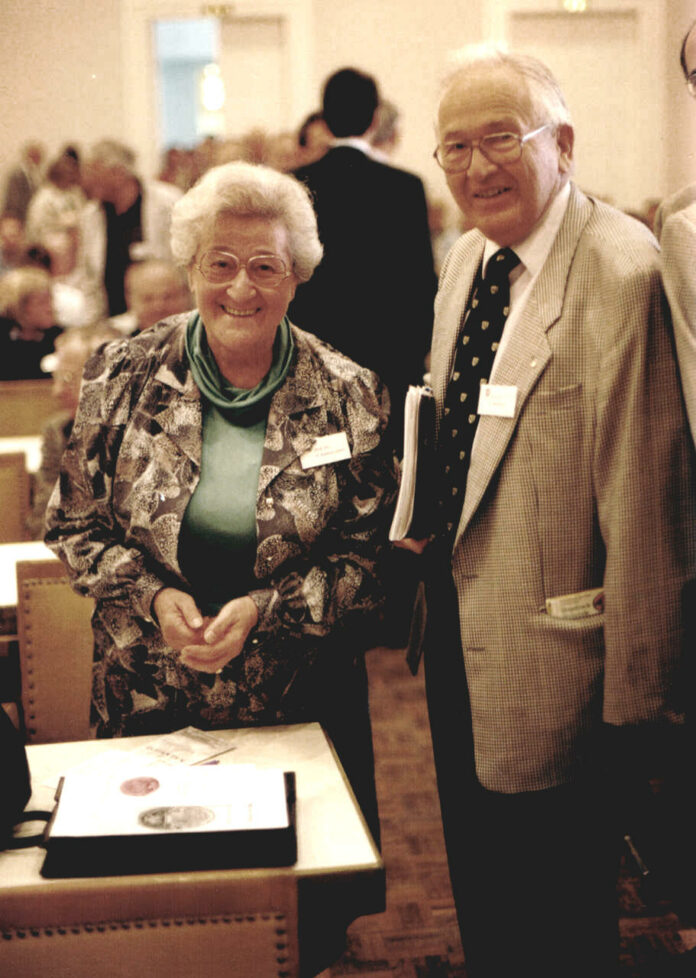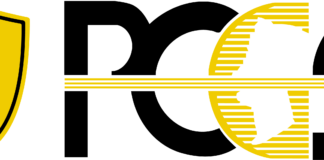After a long, fulfilled, and eventful life, Maria Radnoti-Alföldi passed away peacefully on 7 May 2022 in Frankfurt. She was born in Budapest as the only child of the doctor Geza Alföldi and his wife Olga. She graduated school in 1944 and studied at the Department of Philosophy of the Budapest University until 1949. Among others, she was taught by the ancient historian and numismatist Andreas Alföldi (1895-1981), who also supervised her doctoral dissertation. She published several essays on 4th-century coinage while she was still a university student, mainly in the Numizmatikai Közlöny. During her studies she also met the archaeologist Aladár Radnóti (1913-1972). The couple married in 1947 and had four children. After her studies, Maria Radnoti-Alföldi worked at the numismatic collection of the Hungarian National Museum until 1957. Since 1950, she had been giving lectures at the Budapest University in the winter semester. After the Hungarian Revolution, the couple fled under adventurous circumstances via Vienna to Munich, painfully leaving their children behind. The family was not reunited until 1962.
In Munich, Maria Radnoti-Alföldi worked between 1957 and 1962 as a research assistant for the project “Fundmünzen der Römischen Zeit in Deutschland” (FMRD – Coin finds of the Roman period in Germany), where she examined coin finds of the Bavarian administrative district of Swabia. She qualified as a university lecturer for Ancient Numismatics at the University of Munich in the summer semester of 1961. Her dissertation was entitled “Die constantinische Goldprägung” (The Constantinian gold coinage; Mainz 1963). Living in Frankfurt, she worked on the coin hoards of the territory of the city of Trier for the FMRD (Berlin 1970). After the death of Aladar Radnoti, she succeeded him as head of his professorial chair, today’s “Institute of Archaeological Sciences, Dept. II” in 1973. This department dealt with the subjects of “archaeology of the Roman provinces as well as auxiliary sciences of archaeology”. Her institute at Gräfstraße in the Bockenheim district of Frankfurt became a numismatic training centre of European renown. She had countless students. At the university, she was briefly and respectfully called “the boss”, and she frequently referred to her colleagues as well as to the author of this text as her “old folks”.
In 1978, Maria Radnoti-Alföldi presented a ground-breaking, two-volume work entitled “Antike Numismatik” (Ancient Numismatics), dealing with the theory and the practice of the subject, providing a bibliography in the second part. In 1991, the 65-year-old retired, an occasion on which the commemorative work “Die Münze: Bild – Botschaft – Bedeutung” (The coin: image – message – meaning) with 30 expert contributions was published. After her retirement, she continued to work on Trier coin finds and published four volumes on the subject between 2006 and 2008. Her numismatic successors were Hans-Markus von Kaenel from 1993 until 2014 and Fleur Kemmers as of 2016.
Her research focused on the self-representation of Roman emperors and the examination of coin finds. She made great contributions to the scholarly organisation of numismatics. Together with her future successor Hans-Markus von Kaenel, she headed a project on Greek coinage of the Berlin-Brandenburg Academy of Sciences and Humanities. Moreover, she was in charge of the project “Coin finds of antiquity” of the Mainz Academy of Sciences and Literature. By now, there are 45 volumes of this project in Germany, which were supervised by her since 1973. They include the works “Studies on ancient coin finds” that were published on the initiative of Maria Radnoti-Alföldi and comprise 23 volumes by now.
Maria Radnoti-Alföldi was full member of the German Archaeological Institute, the Mainz Academy of Sciences and Literature and honorary member of the Frankfurt Numismatic Society, the Austrian Numismatic Society, the Hungarian Numismatic Society, the Hungarian Society for Archaeology, the Société Française de Numismatique and the Commission Internationale de Numismatique. She was awarded the Archer M. Huntington Medal by the American Numismatic Society in 2000 and received the Order of Merit of the Federal Republic of Germany in 1992. The international numismatic world was home to Maria Radnoti-Alföldi, especially because – in addition to her mother tongue Hungarian – she was proficient in German, English, French, Italian and Latin.
The deceased was a devout Catholic, who actively practised her faith by working for the Frankfurt Bahnhofsmission, an organisation for helping rail travellers in need. Those in need and charitable organisations could count on her. For the funeral announcement, her family – consisting of her son, daughters, grandchildren, and great-grandchildren – chose the telling phrase by Augustinus “Moneta Christi homo est” (Man is Christ’s coin), combining faith and numismatics. On 20 May 2022, the funeral service was held in the presence of her family, some students and colleagues at the Frankfurt Main Cemetery.
After asking numerous former students and colleagues of the deceased, CoinsWeekly is very grateful to Frank Berger for providing us with this slightly adapted and shortened version of his obituary that was also published in the “Numismatisches Nachrichtenblatt”.
In 2016, Helmut Schubert congratulated Maria Radnoti-Alföldi on her 90th birthday in a CoinsWeekly article.
You should also take a look at the Wikipedia entry about Maria Radnoti-Alföldi. There you can find a selection of her publications.




